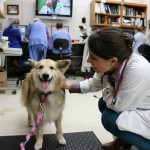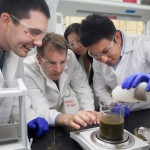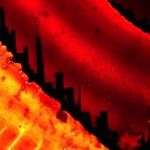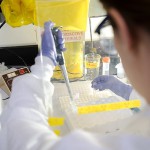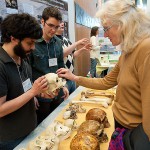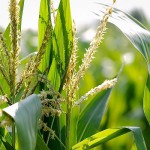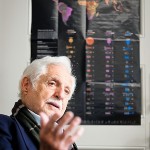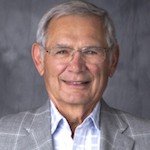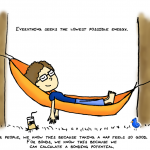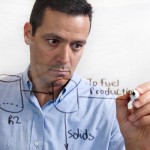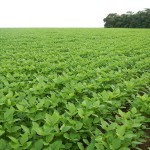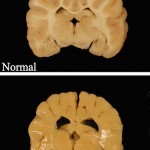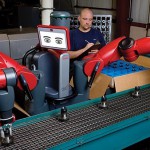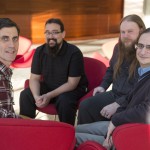Category Science & Technology
Study reveals possible biological trigger for canine bone cancer
Researchers at the University of Wisconsin–Madison School of Veterinary Medicine (SVM) have identified the biological mechanism that may give some cancer cells the ability to form tumors in dogs. The recent study uncovered an association between the increased expression of a particular gene in tumor cells and more aggressive behavior in a form of canine bone cancer. It may also have implications for human cancers by detailing a new pathway for tumor formation.
Computer sciences, mathematics professors win Sloan Fellowships
Two University of Wisconsin–Madison professors have been selected for Alfred P. Sloan Research Fellowships - an honor awarded on a competitive basis to promising young researchers in the early stages of their careers.
Helping Wisconsin dairy farms produce ‘brown gold’
In the heart of Wisconsin, a project is underway to produce energy from a resource in little danger of running low: cow manure, also known as "brown gold."
Johnson Controls partners with UW–Madison to reduce commercial energy costs
Johnson Controls began when founder Warren Johnson invented the thermostat in 1885, and today the Milwaukee-based controls company is working toward another major innovation in heating and cooling in collaboration with UW–Madison chemical engineers. A research group led by Jim Rawlings, the Paul A. Elfers professor and W. Harmon Ray professor of chemical and biological engineering, has partnered with Johnson Controls to develop better HVAC control systems for its clients in large commercial buildings.
New fiber-optic monitoring tools could help industry unlock geothermal energy
University of Wisconsin–Madison geoscientists and engineers are working with industry partners and the U.S. Department of Energy to develop a highly detailed monitoring system for geothermal wells.
Contest seeks another round of amazing science images
To highlight the visual and scientific value of scientific imagery, the fifth annual Cool Science Image Contest is soliciting the best images from students and faculty and staff scientists on the University of Wisconsin–Madison campus.
Campus push to address crisis in U.S. biomedical research
The growing realization that the American biomedical research enterprise is unsustainable and requires a comprehensive fix will be the subject of a wide-ranging campus conversation to take place over the next few months.
Sidebar: Sessions set to discuss biomedical research crisis
A series of campus-wide discussions to gather feedback and ideas from researchers — faculty, staff scientists, postdocs, and graduate students as well as administrative staff — on what many people believe is a crisis in U.S. biomedical research has been scheduled for March.
Darwin Day celebration focuses on islands, isolation
What do Madagascar and Jurassic Park have in common? Both are island-based evolutionary “experiments” that will be highlighted in this year’s Darwin Day celebrations, sponsored by the J.F. Crow Institute for the Study of Evolution at UW–Madison and its partners. “Darwin Day 2015: Islands and Isolation” will run all day Thursday, Feb. 12, and focus on the unique opportunity that islands provide to witness evolution and the diversity of life.
UW botanist harnesses the grid to illuminate crop growth
With help from the Center for High Throughput Computing (CHTC), botany Professor Edgar Spalding is applying this astronomical sense of scale to our understanding of corn. Spalding uses the HTC capabilities pioneered by Miron Livny, Morgridge Institute for Research chief technology officer, to quantify the incredibly complex process of corn growth from seed to vigorous seedling — not just one at a time, but over thousands of samples.
Wisconsin Alumni Research Foundation near the top of the patent charts for 2013
In 2013, with 160 patents, the Wisconsin Alumni Research Foundation (WARF) was near the pinnacle of the university patent heap.
New $3M distinguished chair at UW–Madison honors influential alumnus
A newly established professorship will allow the University of Wisconsin–Madison to hire new faculty to build upon its widely recognized leadership in chemical and biological engineering. Supported by a $3 million commitment from the Wisconsin Alumni Research Foundation (WARF), the Ernest Micek Distinguished Chair in Chemical and Biological Engineering will honor a UW–Madison graduate with a long record of service to UW–Madison.
No joke: Chemistry thesis transmuted into comic book
As thesis writing approached, University of Wisconsin–Madison graduate student Veronica Berns faced a conundrum. She knew how hard it was to describe her work to friends and family — indeed, anybody outside the tight clan of structural chemists. And that was particularly true since she concentrated on a category of should-be-impossible structures called “quasicrystals.” However, Berns liked drawing and using “normal, English-language words,” and so about a year before graduation, she opted to accompany her traditional Ph.D. thesis with a comic book version.
Calculating the future of solar-fuel refineries
A team of University of Wisconsin–Madison engineers has developed a new tool to help plot the future of solar fuels. In a paper recently published in the journal Energy & Environmental Science, a team led by chemical and biological engineering Professors Christos Maravelias and George Huber outlined a tool to help engineers better gauge the overall yield, efficiency and costs associated with scaling solar-fuel production processes up into large-scale refineries.
Study shows Brazil’s Soy Moratorium still needed to preserve Amazon
Today, fewer chicken nuggets can trace their roots to cleared Amazon rain forest.
Rare neurological disease shines light on health of essential nerve cells
Ian Duncan is a Scotsman with the iron discipline and stamina of a competitive marathoner, triathlete and cross-country skier. As a neuroscientist at the School of Veterinary Medicine at the University of Wisconsin–Madison, he's applied his tenacity to a rare genetic disorder.
UW computer scientists enhance robotic manufacturing
Some industrial robots are hulking, highly specialized pieces of machinery that are cordoned off by cages from human factory workers.
New research project funded by Department of Defense will enable faster, better coding
Pliny, a new research project for writing more error-free, secure code, is being funded by a four-year, $11 million grant recently announced by the Defense Advanced Research Projects Agency (DARPA), part of the U.S. Department of Defense. UW–Madison computer scientists will collaborate with their counterparts at Rice University in Houston (which will lead the project), the University of Texas at Austin, and the company GrammaTech.

